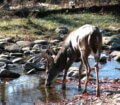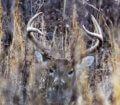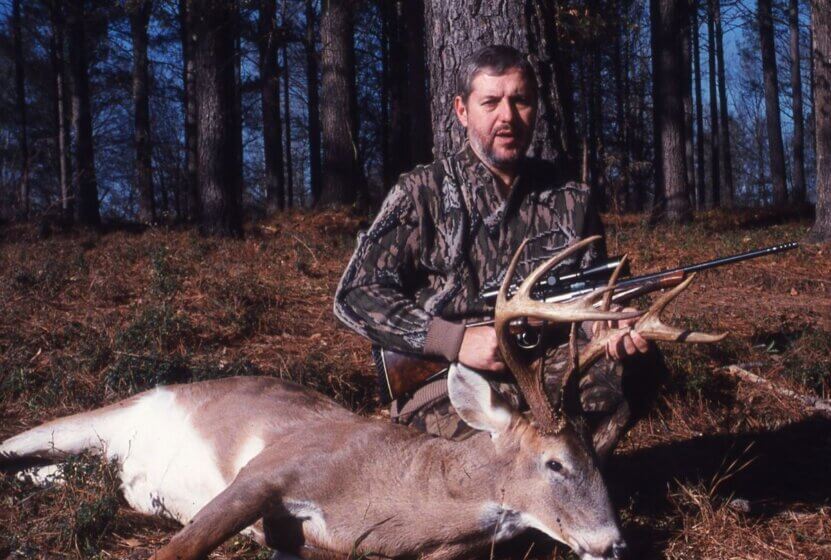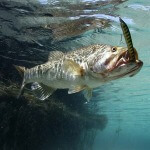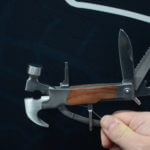Editor’s Note: Dr. Robert Sheppard of Tuscaloosa Alabama, who has taught schools about bowhunting for deer, hunting with blackpowder for deer and rifle hunting for deer, averages hunting white-tailed deer more than 40 days each year. Because of Sheppard’s medical training, he studies the sport of deer hunting with a researcher’s eye year-round and often sees overlooked details most deer hunters miss, which can make the difference in a successful and an unsuccessful hunt.
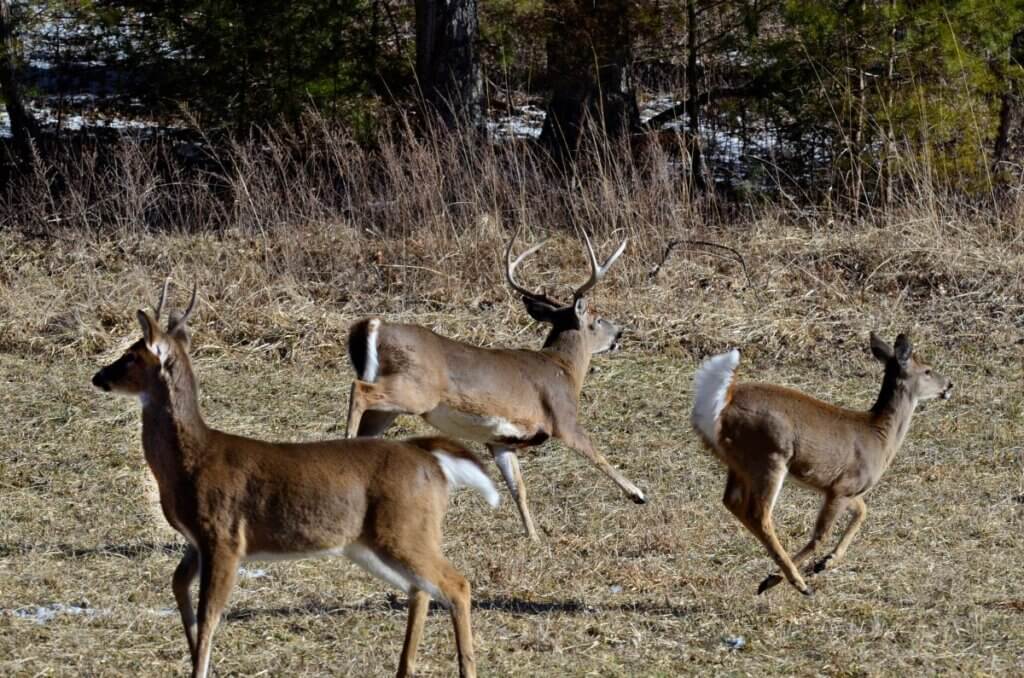
After deer have felt hunting pressure, their movement patterns change, which often will occur after the second week of bow season, if considerable pressure has been put on the animals from other hunters. Because the deer realize they’re having hunter encounters during daylight hours, they’ll begin to feed after dark and stay away from their food sources until night. Therefore, tree stands and ground blinds will have to be moved from the food source to another place if you want to consistently bag deer.
But to know where to move your tree stand to, additional scouting is required. One of the signs that indicates a hunter should begin to scout for a new place to put his tree stand is when he sees deer entering the field from several different directions. He may find that when he moves his stand to set up an ambush, the deer still won’t consistently come out in the same place every day. He also may notice that he does not see as many deer move into the field during daylight hours. But after a rain, he observes just as many tracks in the field as he has at the first of the season.
To put your stand in a more-productive area, the most-effective technique is to back that stand up to a point in the woods the deer are coming into prior to entering the field after dark. To locate this region, I’ll scout on the days when the weather or wind conditions aren’t right for hunting. You can list your tree stands and ground blinds in hunting apps or your GPS.
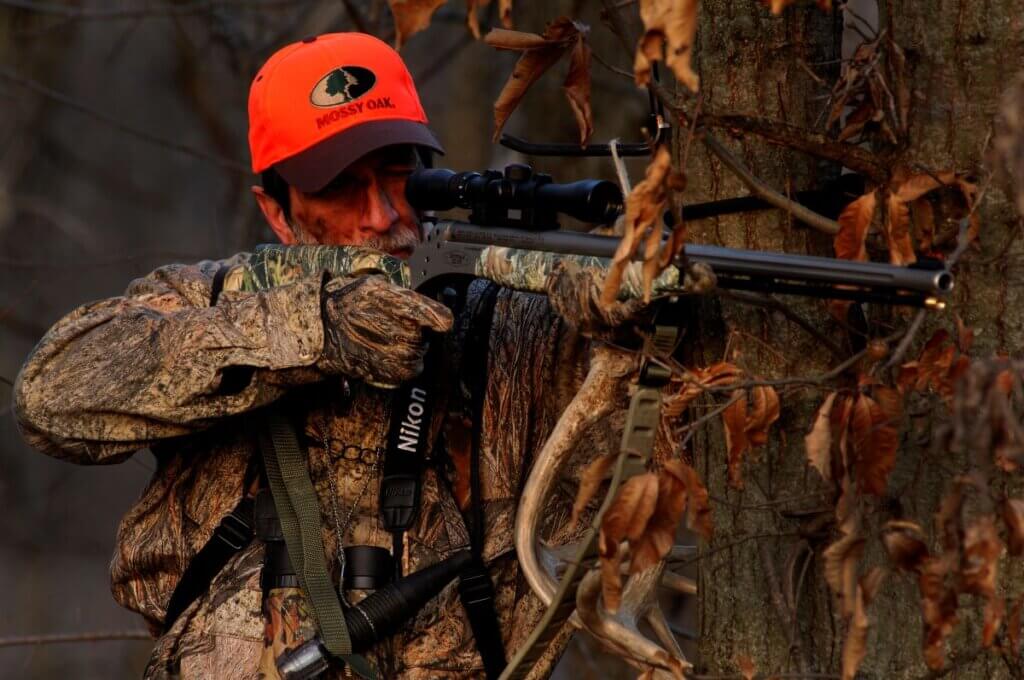
Common sense is your best tool to find that staging area after the deer have quit showing up in the field. The most-reliable signs for locating deer are finding places in the woods where the deer’s feet hit the ground regularly.
Go to the trail where you’ve hunted effectively during the early season, and follow the trail away from the food source into the woods. I’ve gotten down on my hands and knees before to track deer further back into the woods away from a primary food source two to three weeks after bow season has begun. Using this tracking method may not help you understand the total deer-movement pattern. However, you will have a better picture of what the deer are doing and will know where you should place your tree stand than you will have had by sitting on the edge of the field waiting for the deer to show up.
You may backtrack one deer 100 yards and find an area where two or three trails cross. Or, you may continue to follow a trail and locate the edge of a slough where 40 deer a day walk down that slough edge regularly. By following one deer trail away from the food source, more than likely you’ll find an area where many of the deer that are using that field as a food source will concentrate prior to entering their feeding ground. Once you discover a place like this, you will see many tracks going in both directions. That’s where you want to set-up your stand for the next week or two of bow season or for the first day or two of gun season.
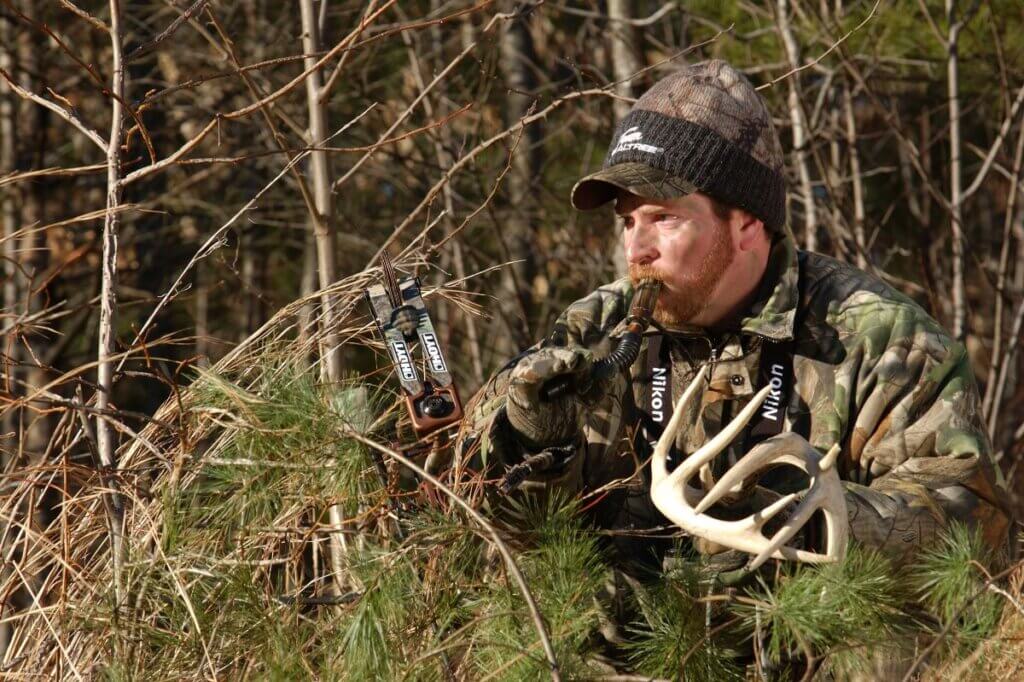
However, instead of relying totally on one of these staging regions away from the field, the consistent hunter will follow four or five trails out of the field going in different directions that will lead him to four or five various staging areas. In each one of these staging areas, he’ll locate a tree for his tree stand. If he’s a bowhunter, he’ll cut shooting lanes in four directions from the tree where he plans to place his stand and list those on his app or in his GPS. (onX Maps, HuntStand and DeerCast apps are some of the favorites of deer hunters).
Also with his compass, he’ll determine what direction his tree stand should be facing, so he’ll know which way the wind must be blowing from to be able to hunt out of that stand. If his tree stand faces to the north, then the best time for him to hunt out of that stand to keep his scent from being carried into his hunting area will be when he has a prevailing north, northwest or northeast wind. Using this system of patterning deer, the hunter will have at least one tree stand he can hunt in the deer’s staging area – no matter what the wind condition is.
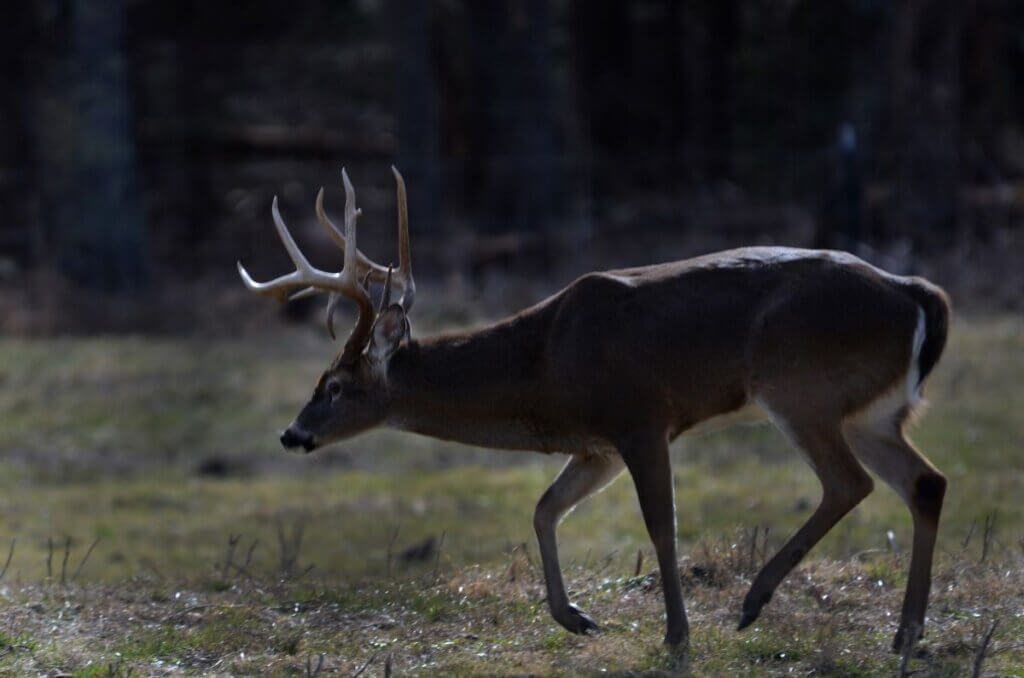
After the hunter has taken his deer from one of these regions or has shot at and missed the deer in these staging areas, the deer begin to learn they are in danger when they enter these staging zones. They’ll start showing up in lesser numbers and finally not at all during daylight hours. Then the deer will wait until later in the evening to enter the field or come out earlier in the morning, which makes successful deer hunting harder. When you begin to backtrack the deer even further from the staging area, the trailing becomes more difficult, because more leaves are on the ground and following the deer trails becomes more difficult.
When you use the links below to go to Amazon, notice on the left of the Audible option where Amazon says you can hear a sample that gives you 10% of these books for free! On the right side of the page for each book and below the offer for a free Audible trial, you can choose to Buy the Audible book.
Be sure to also check out John’s Free Books as our gift to you!
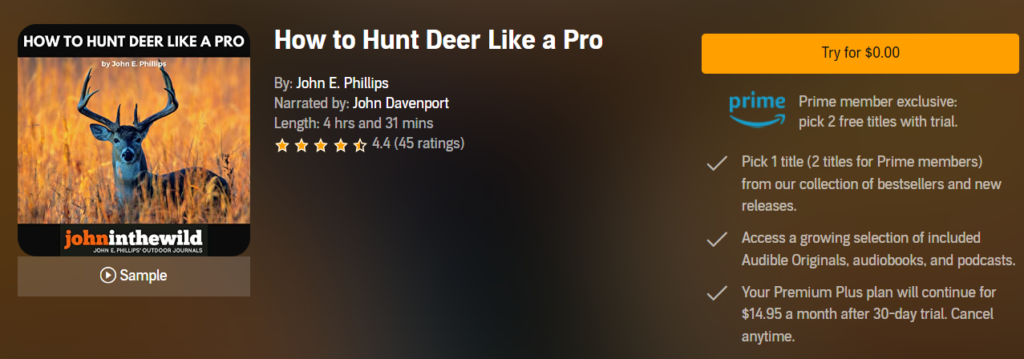
Prime Members: You’re eligible to claim 2 free titles with your 30-day Audible Premium Plus trial! Browse more than 100 of John E. Phillips’ expert guidebooks on hunting and fishing here.
Books By Topic
Category Shortcuts: View on Amazon
| Deer Hunting | Turkey Hunting | Elk Hunting | Bass Fishing |
| Mule Deer Hunting | Bowhunting | Bowfishing | Crappie Fishing |
| All Cookbooks | Hunting Cookbooks | Fishing Cookbooks | All Audible Books |

How to Hunt and Take Big Buck Deer on Small Properties
In this book, you’ll hear from 14 hunters who either have gained permission or leased properties as small as six acres to as much as 250 acres, and how they consistently take older-age-class bucks off these little lands.
VERSIONS: AUDIBLE, KINDLE & PRINT

Jim Crumley’s Secrets of Bowhunting Deer
Using a black magic marker and a gray work jumpsuit, Jim Crumley of Buchanan, Virginia, drastically changed the nature and purpose of hunting camouflage when he created the first sportsman’s camouflage – Trebark. Crumley’s love of bowhunting and his desire to be more invisible changed hunting clothing forever.
In this hunting guide, he shares the wisdom that he’s learned throughout his lifetime about how to be a hunter, how to find a deer lease, how to scout for deer, and more.
Special features include how to:
- Have a magic 60 acres to hunt
- Decide the best equipment to use
- Find deer year-round
- Locate land to hunt
- Know the best place to put your tree stand
- Get bucks within bow range
VERSIONS: AUDIBLE, KINDLE & PRINT

How to Hunt Deer Like a Pro
How do you know if the land you hunt has a trophy deer on it? Wildlife manager Bob Zaiglin, of Uvalde, Texas and Jim Crumley, the father of modern-day hunting camouflage, tells you how to find out. GPS can make finding and taking that trophy buck easier. This hunting guide will teach you how to hunt big bucks where no one else can find them, how to call deer, and how to become versatile as a deer hunter, so that if one deer tactic doesn’t work, another one will.
In the chapter, “How to find Bucks at Scrape,” Dr. Keith Causey, retired professor of Wildlife Science at Auburn University, describes the best way to hunt a scrape.
Brad Harrison of Neosho, Missouri, is a nationally-known videographer, professional deer hunter and master at calling deer. Another master is Will Primos of Primos Game Calls. These two experts will tell the best deer calls and when to use them in this book.
And for over 20 years, Bo Pitman, lodge manager of White Oak Plantation, has been studying deer movement patterns. He explains what types of conditions are best for predicting deer movement.
VERSIONS: AUDIBLE, KINDLE & PRINT

Deer hunting and deer hunters are drastically changing each year. To learn new techniques for hunting deer and have more places to hunt, I’ve interviewed some of the best deer hunters in the nation and share their tactics in How to Hunt Deer Like a Pro: Volume II.
In Chapter 10, Jacob Lamar tells you his tactics for consistently taking older-age-class bucks on public lands in several states. Chapter 11, Bob Walker explains how to find places on public lands where you can hunt that 99 percent of the other hunters never have considered hunting. The Bonus Chapter with David Ramey tells you how, where, when and with what equipment to take big Kansas bucks on public lands by hunting in 100-degree weather when others won’t hunt.
Chapter 13, Mark Drury, his family and his guests take mature bucks every season by having more small places to hunt rather than one large property. Drury explains the strategy of having satellite farms to hunt that only may be 50-150 acres each or less. Chapter 15, Pat Reeve, who hunts far-northern states and Canada, says, “I don’t like hunting for mature bucks until the weather is 20 degrees or less.” Chapter 4, Dr. Larry Marchinton says that funnels are the most-reliable stand sites to hunt for big bucks and tells why.
VERSIONS: AUDIBLE & PRINT

